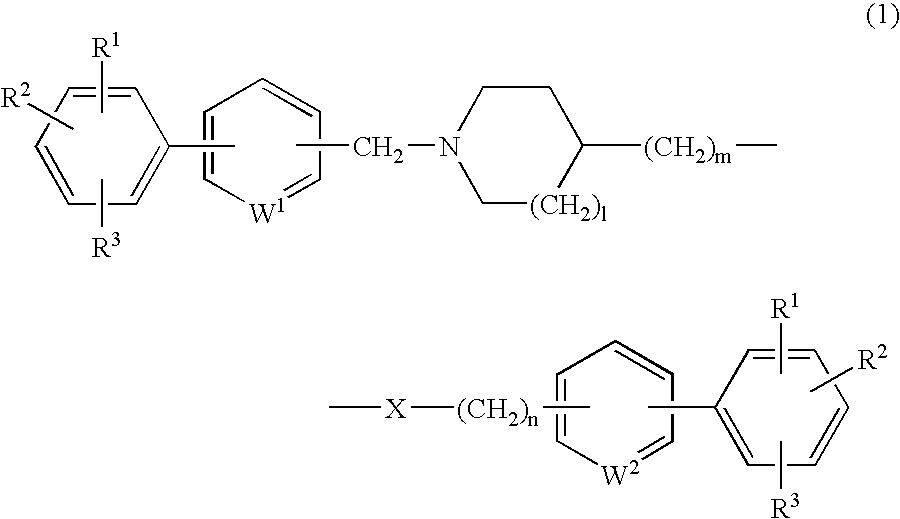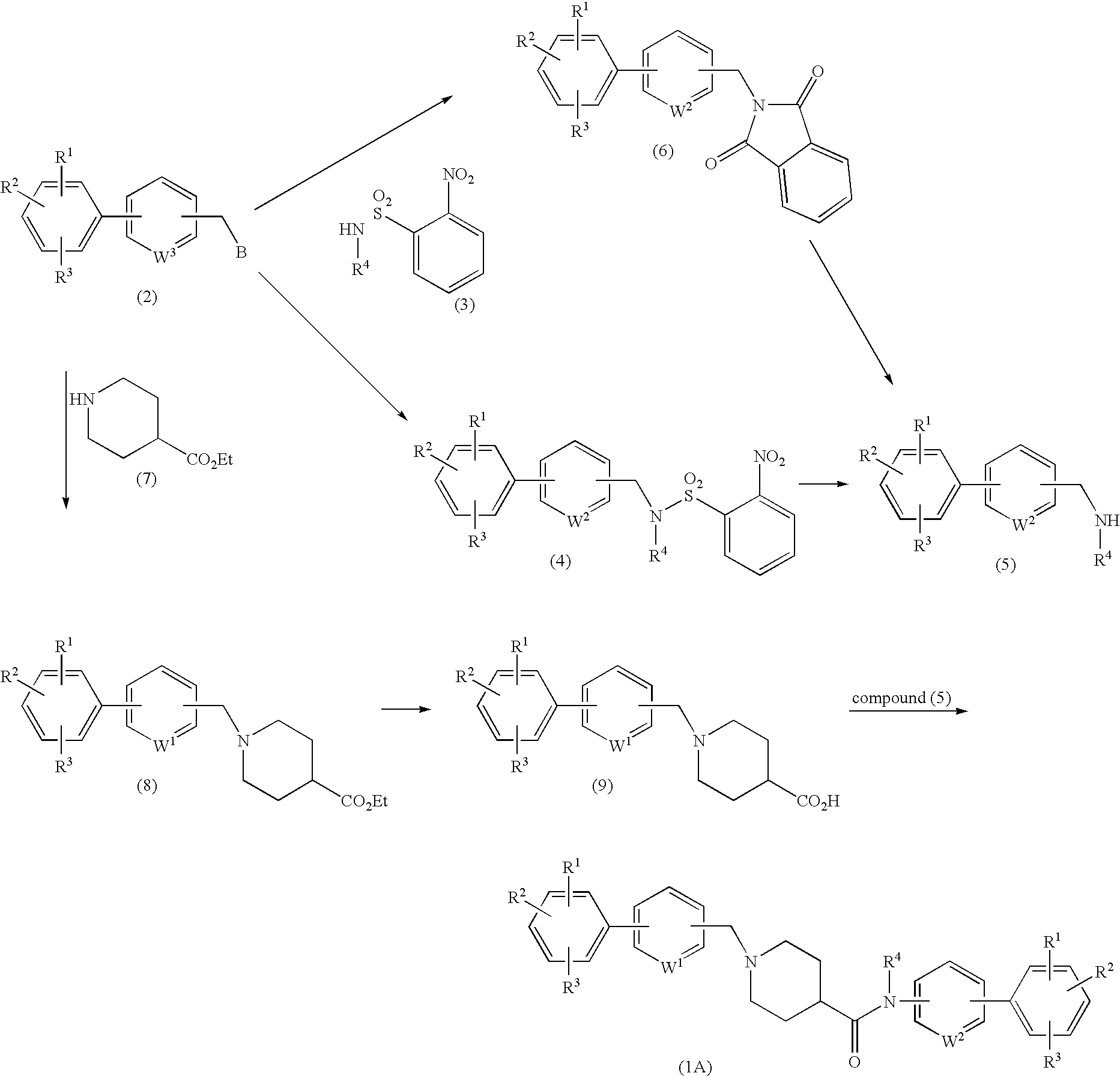Cyclic amine compounds and pharmaceutical composition containing the same
a technology of cyclic amine and compound, which is applied in the field of new cyclic amine compounds, can solve the problems of antigenicity and allergic reactions, difficulty in developing antibody-based drugs, and oral administration, and achieve excellent anti-allergic effects, anti-rheumatic effects, and anti-allergic effects
- Summary
- Abstract
- Description
- Claims
- Application Information
AI Technical Summary
Benefits of technology
Problems solved by technology
Method used
Image
Examples
preparation example 1
Synthesis of ethyl 2-(3,4,5-trimethoxyphenyl)isonicotinate
3,4,5-Trimethoxyphenylboronic acid (20.10 g) and ethyl 2-chloroisonicotinate (18.56 g) were suspended in a mixted solvent of toluene (200 mL) and THF(100 mL), and to the suspension 2 M sodium carbonate (200 mL) and tetrakis(triphenyl phosphine) palladium(0) (5.78 g) were added. The mixture was stirred at 90° C. overnight under an argon atmosphere. Ethyl acetate was added to the reaction mixture to separate an organic layer. The organic layer was washed with brine, dried over anhydrous sodium magnesium and concentrated under reduced pressure. The residue was purified by column chromatography on silica gel using hexane-ethyl acetate (5:1) to give the title compound.
Yield: 27.99 g (88%). 1H-NMR (400 MHz, CDCl3) δ: 1.45 (t, 3H, J=7.0 Hz), 3.92 (s, 3H), 3.99 (s, 6H), 4.46 (q, 2H, J=7.0 Hz), 7.30 (s, 2H), 7.76 (dd, 1H, J=5.1 Hz, 1.6 Hz), 8.24 (dd, 1H, J=1.6 Hz, 0.8 Hz), 8.81 (dd, 1H, J=5.1 Hz, 0.8 Hz).
preparation example 2
Synthesis of 4-hydroxymethyl-2-(3,4,5-trimethoxyphenyl)pyridine
Ethyl 2-(3,4,5-trimethoxyphenyl)isonicotinate (24.57 g) was dissolved in dry THF (200 mL), and to the solution lithium aluminum hydride (2.94 g) was added at 0° C. under an argon atmosphere. The mixture was stirred at 0° C. for 1 hour as it is. A small amount of water and then sodium sulfate were added to the reaction mixture, and the reaction mixture was filtered through celite. The filtrate was evaporated, and the reultant crude crystals were recrystalized from ethyl acetate-hexane to give the title compound.
Yield: 17.53 g (82%). 1H-NMR (400 MHz, CDCl3) δ: 3.90 (s, 3H), 3.95 (s, 6H), 4.79 (s, 2H), 7.19 (d, 1H, J=5.1 Hz), 7.21 (s, 2H), 7.66 (s, 1H), 8.60 (d, 1H, J=5.1 Hz).
preparation example 3
Synthesis of 4-chloromethyl-2-(3,4,5-trimethoxyphenyl)pyridine
4-hydroxymethyl-2-(3,4,5-trimethoxyphenyl)pyridine(19.18 g) was dissolved in chloroform (100 mL), and to the solution thinly chloride (10.2 mL) was added at 0° C. After 30 minutes, the mixture was warmed to room temperature and stirred for 4 hours. The reaction mixture was washed with aqaueous saturated sodium hydrogendcarbonate and brine, dried over anhydrous sodium sulfate and evaporated. The residue was then recrystallized from ethyl acetate-hexane to give the title compound as pale yellow crystalline powder.
Yield: 18.24 g (89%). 1H-NMR (400 MHz, CDCl3) δ: 3.91 (s, 3H), 3.97 (s, 6H), 4.61 (s, 2H), 7.24 (s, 2H), 7.26 (d, 1H, J=5.1 Hz), 7.68 (s, 1H), 8.67 (d, 1H, J=5.1 Hz).
PUM
| Property | Measurement | Unit |
|---|---|---|
| Fraction | aaaaa | aaaaa |
| Fraction | aaaaa | aaaaa |
| Fraction | aaaaa | aaaaa |
Abstract
Description
Claims
Application Information
 Login to View More
Login to View More - R&D
- Intellectual Property
- Life Sciences
- Materials
- Tech Scout
- Unparalleled Data Quality
- Higher Quality Content
- 60% Fewer Hallucinations
Browse by: Latest US Patents, China's latest patents, Technical Efficacy Thesaurus, Application Domain, Technology Topic, Popular Technical Reports.
© 2025 PatSnap. All rights reserved.Legal|Privacy policy|Modern Slavery Act Transparency Statement|Sitemap|About US| Contact US: help@patsnap.com



